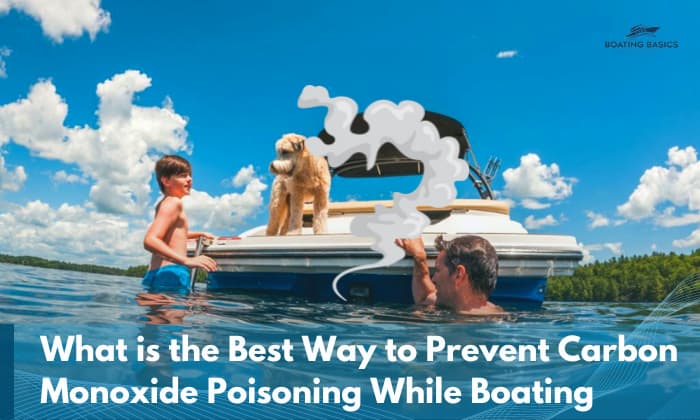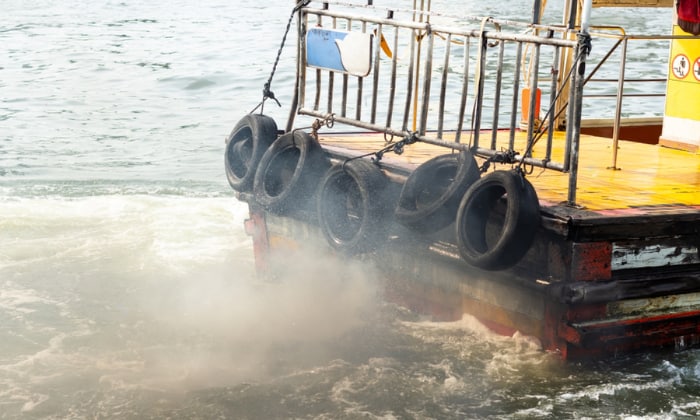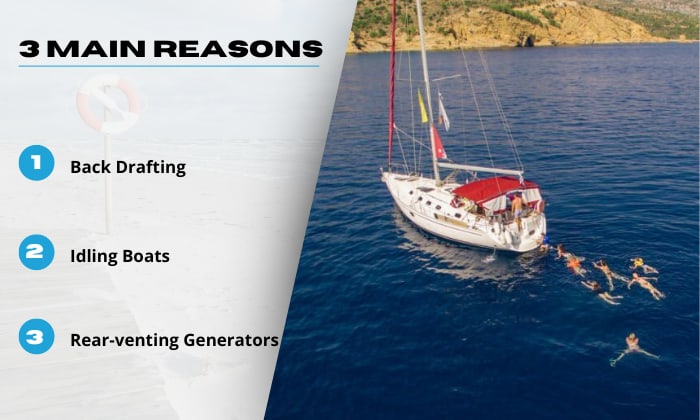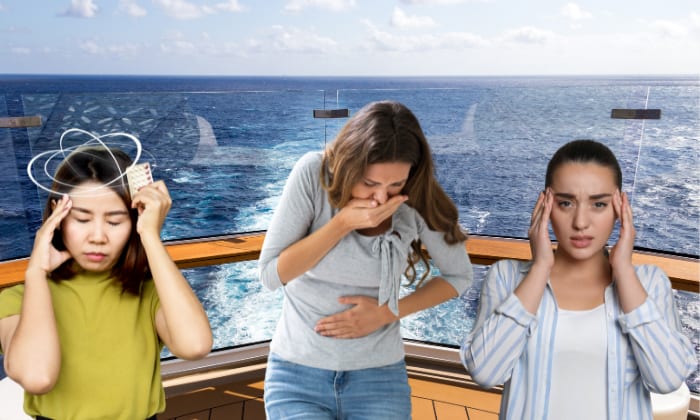It’s easy to get lost in the thrill and fun of boating, to the point that we often overlook the hidden risks involved. Carbon monoxide poisoning may be the last thing on your mind, but you have to be aware of the danger it poses and how to prevent it.
So, what is the best way to prevent carbon monoxide poisoning while boating? A must-do precaution to take by every boater is to simply avoid enclosed spaces and areas in boats with poorly controlled combustion.
In this article, we’ll protect yourself and your loved ones from carbon monoxide poisoning while enjoying your time on the water.
Table of Contents
Preventing CO Poisoning on Boats
I said the above recommendation based on the fact that most modern boats follow stringent safety guidelines. In fact, did you know that carbon monoxide risk is higher inside cars than onboard a vessel?
Of course, some people will beg to differ and ask, “Well, what about open-air carbon monoxide poisoning?” That’s definitely a good reason why you shouldn’t overlook this problem.
It’s still dangerous because there’s more than one way you may be exposed to it. As such, prevention hinges on knowing what to avoid and the issues to look out for. Here are some key steps to ensure your safety:
- Optimal Ventilation: Ensure there’s proper ventilation in all rooms because it only helps in reducing the risk of the exhaust gas accumulating in the vessel’s compartments.
- Avoid Enclosed Spaces: If you’re on a larger vessel with an internal combustion engine, assuming the boat has one, avoid spending too much time in enclosed rooms near the engine.
- Enjoy fresh air: If you’re a passenger, just spend most of your time taking in the fresh air on the deck. Being outdoors reduces your exposure to CO.
- Regular Inspection: If you’re the boat operator, stay ahead of issues pertaining to leaks in the exhaust system.
- Check other sources: Beware of any other possible source of carbon monoxide onboard, like propane tanks, heaters, and generators (especially portable ones). Take the time to inspect the tanks and cooking ranges for gasoline and propane fumes.
- Swim Deck Safety: I’ve already discussed in the past that the highest concentration of carbon monoxide occurs near swim decks. Remember to avoid swimming or lingering under or around them.
- Install a CO detector: Consider installing a carbon monoxide detector or sensor onboard. It’s been proven to be a good way to prevent accidental CO poisoning on boats.
How Does CO Poisoning Happen on Boats
CO poisoning happens due to buildups of the said gas in boats. As for how that happens, here are the likely culprits:
- Back Drafting: When a boat operates at a high bow angle or is incorrectly loaded, back drafting happens, leading to the CO accumulating in important rooms like the bridge, cabin, and cockpit.
- Idling Boats: Boats left idling also tend to produce and accumulate CO in those said rooms.
- Rear-venting Generators: Generators that vent exhaust gases towards the rear can heighten CO risk in open areas like the swim deck or water platform.
But, again, since ventilation is a proven precaution against (carbon monoxide) when boating, it’s logical to say that this problem is only prevalent in poorly designed boats.
Symptoms of Carbon Monoxide Poisoning
The CDC makes it clear that more exposure to CO translates to a higher risk of death. It’s tricky in that it doesn’t exude any odor, color, or taste, making it challenging to detect. Early symptoms include:
- Dizziness
- Nausea
- Vomiting may also be present.
Without medical intervention, it will pave the way to more serious symptoms like:
- Severe headache
- Chest pain
- Fainting
- Confusion
- Impaired motor control
Conclusion
Overall, you shouldn’t fear carbon monoxide on a boat, especially if you know that it’s made by a responsible and respectable manufacturer. Again, poor design is really the main culprit.
Still, now that you know what is the best way to prevent carbon monoxide poisoning while boating, I hope you’ll still exercise the necessary caution both as an operator and passenger against it. Adequate vigilance tends to pay off, after all.

“My intention from the first day establishing Boating Basics Online is to provide as much help as possible for boaters who want to experience a first safe and convenient trip. So feel free to join us and share your beautiful journeys to the sea!”




